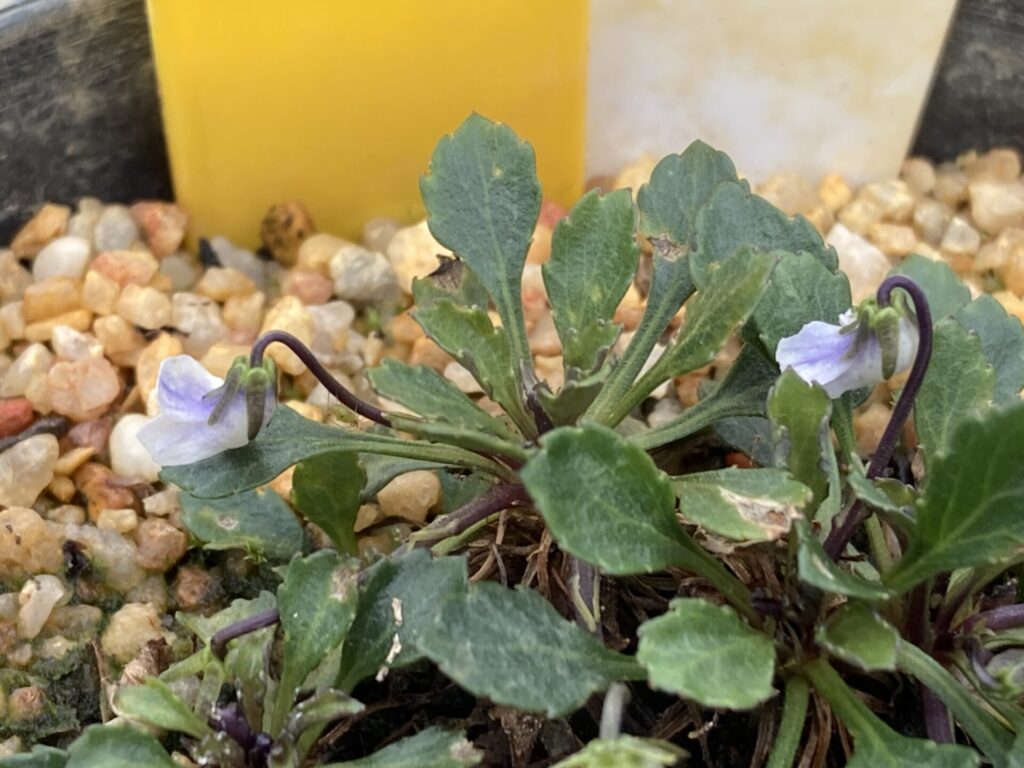The ‘Survive and Thrive’ project team have been hard at work for the last 2 years collecting seeds in Namadgi National Park of 12 target species severely affected by the 2020 bushfires. These species were chosen because they had most or all their known populations burnt in 2020, they were previously unstudied, and they had little, or no germplasm safely secured in any seed bank.
Dr Gemma Hoyle is the lead researcher from the National Seed Bank (NSB) at the Australian National Botanic Gardens (ANBG), and said of the project “On reflection now this has been the most challenging list of species I’ve ever worked on. It’s been a lot of fun, but it was also baffling and frustrating. There’s still so much more to uncover”.
That’s because, for most of the species, seeds were either difficult to collect or difficult to germinate.
In total 31 wild conservation seed collections have now been secured in the NSB, including 11 of the 12 primary target species and all 7 secondary target species.
Dr Hoyle would like to acknowledge all the seed collecting work done by ANBG staff, visitors to the seed bank and the incredible army of National Seed Bank volunteers. Without them none of her work is possible.
An important component of the research undertaken at the NSB involves trying to uncover germination requirements. Preliminary studies revealed that the majority of the ‘Survive and Thrive’ species have complex seed dormancy mechanisms and germination requirements.
Extended research was conducted on Viola improcera (Dwarf Violet) as part of a collaborative study of the Viola genuswith the Victorian Conservation Seed Bank. Findings were presented at the Ecological Society of Australia conference in Melbourne in December 2024. Results suggest that V. improcera seed dormancy status varies between populations, perhaps due to maternal effects during seed development.

After months of investigation, the NSB have also achieved the first known germination of seeds of Phebalium squamulosum subsp. ozothamnoides (Mountain Phebalium) and Leionema lamprophyllum subsp. obovatum (Shiny Phebalium) following treatment with smoke chemicals. Seedlings have been transferred to the ANBG Nursery for propagation and planting out.
In other exciting news, hidden diversity has been uncovered in an additional ‘Survive and Thrive’ study aimed at investigating the density and diversity of species that are overlooked by traditional sampling methods because their seeds are buried in the soil seed bank.
64,000 cm3 of soil was collected from Rotten Swamp in Namadgi National Park in Dec 2023 and taken back to the NSB. After 12 months in the seed bank glasshouse, well over 2000 seedlings had sprouted representing more than 20 different species!
A soil seed bank is a natural reserve of viable seeds in the soil that has accumulated over time. Seeds can remain viable in the soil for many years and provide an important genetic reserve, as well as mechanisms for re-establishment after large disturbances such as bushfires.
The most exciting surprise was discovering one of the Viola morphotypes that sprouted was in fact a ‘Survive and Thrive’ primary target species Viola improcera. There is very little known about the reproductive ecology of this species. So, it is great to be able to confirm that there’s a genetic reserve of this Endangered (EPBC Act) species hidden in the soil seed bank!
While research to date has uncovered a lot for this previously unstudied flora, these insights are only the tip of the iceberg. More work is needed to increase the genetic diversity of collections held in the NSB and to ensure that they can be reliably turned into plants in the future. In addition, we need to better understand how climate change will impact these vulnerable species, including the increase in fire frequency and intensity.
We would like to thank all the ‘Survive and Thrive’ funding and delivery partners, and our donors who continue to support the Parks Trust as Gemma is hoping to secure more funding to continue her research.



